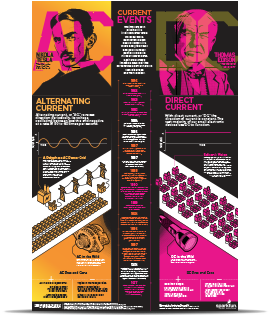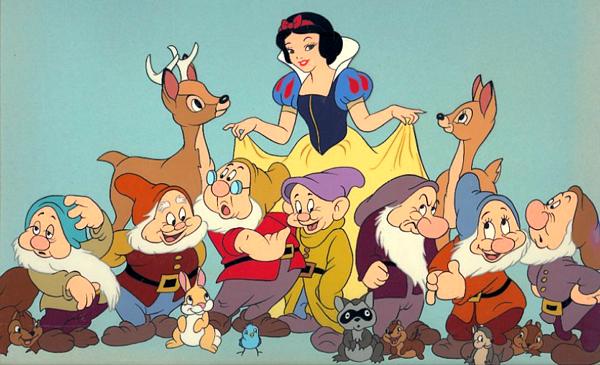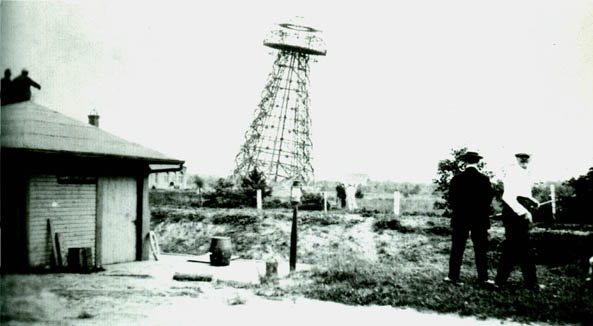A real trip down memory lane (if you're old enough)...
via metafilter
Amazon Deals
New at Amazon
Friday, July 12, 2019
Friday links
July 14 is Bastille Day, the anniversary of the French revolution in 1789.
These poorly translated English language T-shirts spotted In Asia are a hoot.
The Century-Long Evolution of the U.S. Army Helmet.
ICYMI, most recent links are here, and include why monkey butts are so colorful, Nikola Tesla's birthday, how to buy your kid's way into college, and the 47 names Disney considered for the 7 dwarfs.
Thursday, July 11, 2019
Ed's London Guide
We get asked for this pretty often - it's a PDF scanned from an old typed copy so there's no easy way to convert to text without re-typing. I may do that one of these days.
He put this together in 1992, but since most of your trip to London will involve historical sites and museums, it's still pretty applicable.
Tuesday, July 9, 2019
Tuesday links
July 9 is Nikola Tesla's birthday: bio, some science and engineering, Tesla coil music, Tesla vs Edison rap battle.
...as a conservative at my small, Minnesota-based liberal arts institution, I’ve spent the last four years defending myself against personal and political attacks from professors and peers alike.
Raising the American Weakling - there's been a 20 percent decrease in grip strength in one generation.
The 47 names Disney considered for the 7 dwarfs.
How to Buy Your Kid's Way Into College.
ICYMI, most recent links are here, and are Independence Day related - history, movies, music, inspirational speeches, the science of barbecue and of fireworks, more.
Monday, July 8, 2019
The 47 names Disney considered for the 7 dwarfs
In the 1930s, as Disney began work on the movie Snow White and the Seven Dwarfs (an adaptation of Snow White by the Brothers Grimm), the writing team compiled the following list of potential names for the seven dwarfs - characters who, in the original story, were unnamed.
As we now know, Bashful, Dopey, Grumpy, Happy, Sleepy, and Sneezy were picked. The name of their leader, Doc, was chosen at a later date, although I don't see Happy on this list, either.
By the way, in 1912 the story had been adapted for the Broadway stage, and the names chosen for the dwarfs were Blick, Flick, Glick, Snick, Plick, Whick, and Quee.
Here's the Snow White and the Seven Dwarfs Original Theatrical Trailer from 1937:
Here's the Snow White and the Seven Dwarfs Original Theatrical Trailer from 1937:
And here are the options they compiled (What the heck is Neurtsy? And why leave off Sleazy and Smutty?):
- Awful
- Baldy
- Bashful
- Biggo-Ego
- Burpy
- Daffy
- Deafy
- Dippy
- Dirty
- Dizzy
- Doleful
- Dopey
- Dumpy
- Flabby
- Gabby
- Grumpy
- Hickey
- Hoppy
- Hotsy
- Hungry
- Jaunty
- Jumpy
- Lazy
- Neurtsy
- Nifty
- Puffy
- Sappy
- Scrappy
- Shifty
- Shorty
- Silly
- Sleepy
- Snappy
- Sneezy
- Sneezy-Wheezy
- Sniffy
- Snoopy
- Soulful
- Strutty
- Stuffy
- Swift
- Tearful
- Thrifty
- Weepy
- Wheezy
- Wistful
- Woeful
via Lists of Note
Sunday, July 7, 2019
Caramel Layer Bars
MAY 05, 2017
I think that desserts that you grew up with are probably the best. My mom always made me chocolate cream cake for my birthday dessert as a kid. I still ask for it today. And when you went to grandma’s house and always had Fudge Nut bars or something else there. You have fond memories of it. Well today, these caramel layer bars are straight from my grandma.
My grandma baked a few desserts that I can remember always being at her house. In the fall it was Apple Bars. The rest of the year, it was these caramel layer bars. They were a huge hit, and my mom made them at home too. When I had my first apartment in college, I remember making them often as well.

My husband, who doesn’t like chocolate, has always liked these. He used to request them when we were first married. That gooey caramel layer will sucker just about anyone in! These caramel layer bars were one of the first recipes I shared on the blog when I started, and today I am updating the pictures and sharing them with you again. They are just too good to miss.

The base is a box cake mix. I am sure you could make a homemade brownie or something, but sometimes you just have to trust Grandma, and use the box mix. Plus, it makes it so easy to make! The recipe calls for a German chocolate cake mix. I am sure others would work, I would just be careful with the ones that have added chocolate chips, or say they have pudding in the mix. I would worry they might be too moist or gooey to stand up to the caramel.
I have noticed that over the years, they have shrunk the size of a bag of caramels. When I first started making this, a 14 oz bag was standard. Now, it is 11 oz. Up to you what you want to do there. I opted to buy a 2nd bag and use some of it. It really isn’t an exact science, so if you don’t want the 2nd bag, 11 oz will work just fine!

I have seen these caramel layer bars around with many names, but I am sticking with the one I grew up with. If you grew up in the Mid West, hopefully these will bring back fond memories for you too!

Caramel Layer Bars - rich and chocolate brownie filled with chocolate chips and gooey caramel. You will not be able to stay away from them!
- Preheat oven to 350 degrees. Spary a 13x9 inch baking sheet with non-stick spray, or line with foil.
- Melt caramel and 2/3 cup evaporated milk, let cool slightly.
- Combine Cake mix, ¾ cup butter, and 1/3 cup milk. Mix well. Put half of mixture into prepared pan. Bake for 6 minutes.
- Sprinkle evenly with 1 cup chocolate chips.
- Spread caramel mixture of the chocolate chips.
- Crumble the remaining dough over the caramel.
- Bake for 25 minutes. Remove from oven and allow to cool completely before serving.
July 9 is Nikola Tesla's birthday: bio, Tesla coil music, Tesla vs Edison rap battle
Want a quick explanation of everything Tesla? Check out this infographic at The Oatmeal.
Epic Rap Battles of History — Nikola Tesla vs Thomas Edison:
The video below is based on stories about Tesla's lost papers and documents, about how the government secreted them away somewhere: The Missing Secrets Of Nikola Tesla from The Phenomenon Archives (described as "A documentary series that takes an in-depth look at the topics found in recently de-classified government documents. It explores well-known issues with new information that has been sequestered from the public"):
Tesla Coils Play the Inspector Gadget Theme Song, Sweet Home Alabama (with an included explanation of how it works), and more Tesla coil music.
Here's Biography.com on Tesla.
By 1917, Tesla had sold the site for $20,000 to pay bills at the Waldorf. That same year, the transmission tower was blown up by the buyers and sold for scrap.
In 2013 it was purchased by a non-profit for the purpose of building a Tesla museum, with the help a fund-raining effort from The Oatmeal. Here's an NPR story on the purchase. More on Wardenclyffe and the likely methods employed in its operation here.
A brief bio:
July 9 is the anniversary of the birth of Serbian-American electrical-engineering genius and futurist Nikola Tesla (1856-1943) (wiki), to a Serbian-Orthodox priest in Croatia. Tesla displayed remarkable intuition for mechanical and electrical phenomena while still a youth, and although he studied physics sporadically in Graz and Prague, he was largely self-taught in scientific and engineering subjects.
July 9 is the anniversary of the birth of Serbian-American electrical-engineering genius and futurist Nikola Tesla (1856-1943) (wiki), to a Serbian-Orthodox priest in Croatia. Tesla displayed remarkable intuition for mechanical and electrical phenomena while still a youth, and although he studied physics sporadically in Graz and Prague, he was largely self-taught in scientific and engineering subjects.
In 1881. he began working at the Budapest Telephone Exchange as a technician, but within a year he transferred to an Edison subsidiary in France, designing electrical equipment. Two years later, he relocated to New York City, where he worked directly for Thomas Edison but resigned several years later in a dispute over pay.
Subsequently, Tesla moved out on his own, eventually forming a company to commercialize his own inventions for the improvement of electric motors and generators operating largely on alternating current (vice Edison's direct current). Most importantly, he invented the concept of polyphase alternating-current power systems and the AC induction motor, which used a rotating magnetic field to propel the rotor.
In 1888, Tesla licensed his patents to George Westinghouse, who used them to devise alternating-current alternatives to Edison's DC systems for generating and distributing electrical power, and eventually alternating current prevailed as the national standard.*
In 1891, Tesla became an American citizen and established his own laboratory in New York City to work on a wide variety of electrical developments, including X-ray technology, radio, and high-voltage/high-frequency apparatus. Among the latter was the "Tesla coil," a device for developing extremely high voltages and creating spectacular displays of artificial lightning.
In 1899, he moved his operations to Colorado Springs and concentrated on devising a system for the wireless transmission of electrical power through the atmosphere (but never realized it at a practical level). He also developed concepts for vertical takeoff/landing aircraft, remote controlled vehicles, and an early directed energy weapon. He ultimately received nearly 300 patents for his discoveries.
Since Tesla had sold his most lucrative patents to Westinghouse and plowed what money he earned later into further experimentation, he died in relative poverty in 1943. Although vastly overshadowed by Edison in the popular imagination, it was Tesla who was primarily responsible for the concepts underlying the electrical power grids used world-wide today.
 |
| Alternating Current (AC) vs. Direct Current (DC) |
Related: The Greatest Inventions Nikola Tesla Never Created.
Subscribe to:
Comments (Atom)




